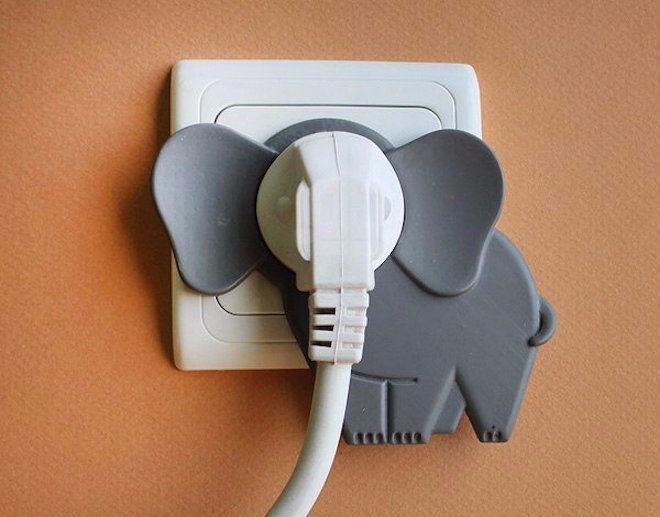How to connect an outlet to a switch

Human activity in a house or apartment is certainly associated with the operation of a household electrical network. Sometimes situations arise when it is necessary to move the wiring elements (light switch or socket) to another, more convenient place. This publication will discuss how to make a socket from a switch, and is it possible to carry out such work not theoretically, but in practice?
In order to understand this issue, we will consider the design and purpose of the switching devices.
Switch

The switch consists of two contact groups (input and output). Its main task is to close or open a ready-made electrical circuit to supply voltage to the lighting device. Remember, this switching device always works only for a phase break, it does not need zero. Only phase wires should be connected to the switch: one from the supply network (to the input contact), the second from the lamp (to the output contact).
Power socket

The main function of this device is to supply voltage to consumers (power tools, household appliances). From a household appliance, a cord with a plug is inserted into an outlet, voltage is supplied to it and the equipment starts to work. To connect the outlet, a phase and zero are required. If the housing of the equipment is conductive, then you will also need protective grounding.
Effects
It will become clear to a person who is a little bit versed in electrical engineering that it is impossible to remove the outlet from the switch without changing the electrical installation of these switching devices. Any household appliances will fully operate only at two potentials - phase and zero. And in the switches there is only a phase, they can in no way provide a zero supply to the outlet.
A parallel circuit for connecting an outlet and a switch will give us the following picture in the end. Every time you plug in a household appliance, current will flow through the lighting fixture and the light will turn on. Such a scheme is undesirable for the following reasons:
- Two consumers (a lamp and a household appliance) will work at the same time, this can lead to overheating of the wires. And you know that any additional heating of the electrical network is already a reason for an emergency.
- Powerful devices (more than 500 watts) cannot be connected according to this scheme, since an increased current will flow through the lamp in the luminaire, which will cause it to go out of operation (burn out).
- At the moment of connecting consumers to the network, a voltage drop is possible. In this case, other household appliances, such as a refrigerator, may turn off.
Let's try to figure out what are the ways out of this situation.
Instead of a switch
This option involves installing a socket instead of an existing switch. This is done when absolutely necessary. Please note that there will be no lighting in the room at all. This option can be used as a temporary one. For example, you are making repairs in a non-residential area and you need to periodically connect the power tool. If work is carried out exclusively in the daytime, when there is enough natural light, then you can connect the outlet instead of the current switch.

To do this, you will need to perform the following switching actions:
- De-energize the room (turn off the machine) in which you will work and check that there is no voltage.
- Dismantle the switch from the socket and disconnect the wires that fit to it.
- Install the socket into the socket and now you need to connect the wires from the switch to its terminals.
- The next stage of work will be in the junction box, where all the electrical wiring of this room has been switched. Connect one wire from the newly installed outlet to the phase conductor of the supply network, the second must be connected to the neutral conductor of the supply network. Two wires that went from the junction box to the luminaire must be disconnected and insulated.
- After completing all the above works, apply voltage to the room from the power source (turn on the machine) and check that the outlet is powered correctly. To do this, turn on some kind of household appliance in it, it should function normally.
From a double switch
If the room has a two-button switch, you can leave it on and power the outlet. Only after such switching will the switch already work in one-key mode.
What is this method?
The three-core wire brought out to the switch was distributed among its terminals as follows:
- one core per input contact;
- two wires for outgoing contacts.

After switching, two cores will remain working for their intended purpose (input and one output), and the third core will be powered by zero of the socket.
The algorithm for these reconnections will be as follows:
- De-energize the workplace (turn off the input machine).
- Pull out the two-button switch from the socket.
- Before connecting the outlet, make a strobe for it from the place where the switch is mounted, and also prepare a hole for installation.
- Place a two-wire wire between the two holes in the strobe.
- Connect the two conductors respectively to the phase and neutral contacts of the socket.
- The next steps will be in the junction box. It is necessary to disconnect the zero core going to one of the lighting fixtures from the neutral wire of the supply network, insulate it, and instead connect the third core of the switch, from which the zero of the socket will now be powered.
- It remains to make the commutation in the switch box. The phase from the socket is connected to the incoming contact, and zero to the outgoing one for the lamp that will now be inactive.
Now test the whole circuit. Apply voltage to the room by turning on the input machine. Press the switch key, which remains working for lighting, the lamp should light up. Insert the plug of some household appliance into the socket, it should work. And be sure to remember, never touch the second key, because if you press it, you will close the zero and the phase together, and this is a short circuit.
We considered possible options for how you can try to make an outlet from a switch. Please note that such work should be undertaken by a person with certain experience in the field of electrical engineering. Before doing the work, think a hundred times, do you need it? Is it better for each switching device to work independently?




